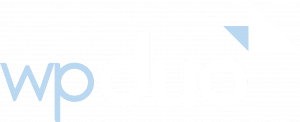
The 6 Marketing Assets YOU NEED for Supercharged Advertising Results
When it comes to Digital Marketing, it can be tough to know what’s critical and what’s unnecessary. So I’ve developed a list of six marketing assets that you can develop to build foundational communication and start supercharging your marketing outcomes.
Why these six? In my years of working to drive results online, there are common threads in what gets an audience keyed in to what a brand is doing. These six items work by first, understanding who your customer is and what they’re looking for, then building valued content beyond just sales messages, and finally, building a front-of-mind, in-demand brand from an audience that trusts you and your product to fulfill their need more than any competition.
1. Focused Customer Profiles
If you only take one idea away from this list, remember this: Get to know your customers better than they know themselves. What do they like? How do they spend their time? What keeps them up at night? What motivates them to look for your category of product, and what’s the benefit to their lives by using your brand?
Ask your customers. They will share. In surveys. At point-of-sale. In offers. Online, after they buy. Not only does this help you understand them better, but this creates effective and engaging marketing copy for future prospects who fit the same profile. Document what they say and use the things they talk about – and the way they talk about it – to market to others.
2. Email Lists
Are you capturing emails for all of your customers and prospects? They are a critical asset and tool for turning window shoppers into customers, and turning customers into repeat buyers. Email interaction is among the clearest signals for how likely someone is to become a customer.
Email marketing is your path for direct, focused messaging to a specific audience. Once they’re on that list, your efforts are no longer spray-and-pray. Those who make it onto your email list are interested in what you have to say, and have moved from browsing to evaluating your product – or even buying.
Send them valuable content above and beyond sales messages, and you will see the audience grow to trust you as an authority – and even share your content with others. The higher the content-to-sales ratio, the better your organization will be seen as giving rather than asking.
And there’s more you can do with email lists. Facebook’s Ad Manager can create demographically-similar audiences that look like an existing audience, based on an email list you provide. Not only does your list empower a direct line of communication with your audience, you can use it to expand into an entirely new audience.
3. Researched Keyword List
Search traffic is high value for the simple reason that people searching are actively looking for something. An answer to a question. A solution to a problem.
Organic search is your widest net. It’s going to find you the broadest results, and send that traffic to various entry points on your site. Paid search is even better – When you create ads on Google, you can point to specific content related to the search terms, and offers targeted to this specific audience.
Optimizing your site and running ads for keywords based on what you think people are looking for is a dangerous trap. You can end up with a site that shows up #1 for terms people aren’t searching for, or burning ad spend on worthless clicks. Research your keyword list using analytics tools (SEMRush, for example) and you will discover what keywords people actually use when they look for products in your category.
4. Key Website Content
Key content is two things: content that’s written to engage your audience and to move them toward taking action. This can be videos, blog posts, podcasts, lead magnets, landing pages – as long as it’s of relevance and value to an audience type and fits one of the stages of engagement: awareness, evaluation, or sales qualification.
Perhaps your key content is an article solving a common problem for your core audience, or a video tutorial, or freely downloadable resources that someone can use to plan getting started. Whatever it is, as long as it’s specific to the customer profile you’re working to attract, and part of moving someone along the many steps from learning about you to wanting to buy from you, it’s key content and should be part of your website design and marketing foundation.
Even better if you’ve optimized this content for search, based on your researched keyword list. You’ll get people to drop into your funnel straight off of a web search.
5. Social Media Presence
Presence on social media is more than just likes. It’s important that you choose your platforms based on where your profiled customers spend time, and creating regular, ongoing content that those customers enjoy – more than simple sales messages.
Along with search, social media serves as the other key point of discovery and awareness online. The difference is, people use social media to share and be entertained, and to consume interesting content, rather than because they are looking to answer a need.
Because of this, you’ll be most successful when you create interesting, fun content that correlates with those things your ideal customer enjoys, rather than make direct sales messages. Create fans of your brand first – then make the occasional offer. And use your key content to do it!
6. Audience-Tailored Offers
If you have customer profiles and know what they’re searching for, you can create offers tailored to get your visitors to take specific action through a tailored offer.
The goal for your offer may vary. For instance, is the goal to sign up for a downloadable guide? To complete a purchase at a one-time discount? To request more information? At the very least your goals should be capturing contact information and leaving the visitor with a reminder of who you are and why you are of value to them.
When you have a compelling message, great content, a clear understanding of what your customers want, and an offer they can’t resist, you’ll see amazing results.
Do an Inventory
Want better results in your marketing efforts? Do a quick check and see how many of these items you’re putting to use for your business. Completing these items can be a bit time-consuming, but it’s worth it in the end when you have all of this great foundational material to build from. And if you’re missing any of these, you know where to put your efforts next to supercharge your advertising efforts.
Are you ready to go with your six foundational marketing assets? Are you stuck figuring out just where to get started? Let me know in the comments below!
Thanks very much for reading. I hope you enjoyed the article, and all the best to your success!

Tell us what you think
Share your thoughts here in the comments! Have a burning question or feedback about the topic? Let’s keep the conversation going.